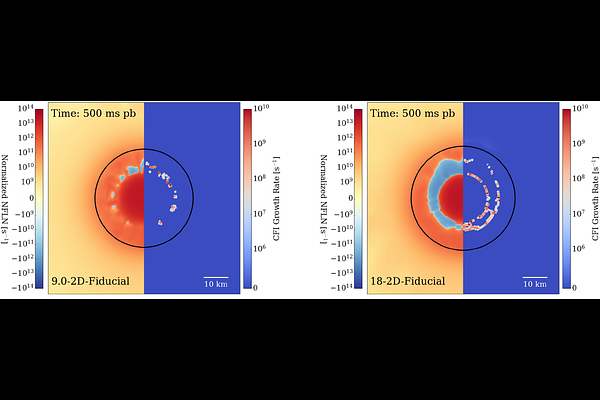The Effect of the Collisional Flavor Instability on Core-Collapse Supernova Models

The Effect of the Collisional Flavor Instability on Core-Collapse Supernova Models
Tianshu Wang, Hiroki Nagakura, Lucas Johns, Adam Burrows
AbstractWe explore the effects of the neutrino collisional flavor instability (CFI) based on 1D and 2D core-collapse supernova (CCSN) simulations done using the sophisticated radiation-hydrodynamic code F{\sc ornax}. We compare the growth rates of homogeneous CFI {(hCFI)} modes calculated by numerically solving the multi-group dispersion relation to those calculated using the monochromatic approximation. We find that the widely-used monochromatic approximation {leads to incorrect growth rates} when applied in multi-group scenarios. {As opposed to the $\sim10^5$ s$^{-1}$ values given by the monochromatic approximation,} the actual growth rates of non-resonance multi-group {hCFI} are at most $\sim$200 s$^{-1}$ in all our models and they are too slow to affect CCSN outcomes. We adopt a BGK flavor conversion scheme in the simulations to include the effects of resonance-like {hCFI}. We find that the CCSN dynamics and neutrino emission properties are only weakly influenced, and the intrinsic stochasticity due to convection and neutrino-driven turbulence can naturally lead to comparable effects. Hence, our analysis of the non-resonance and resonance-like {hCFI} into CCSN simulations suggests that the effects of neutrino flavor conversion triggered by {hCFI} modes are in general small.